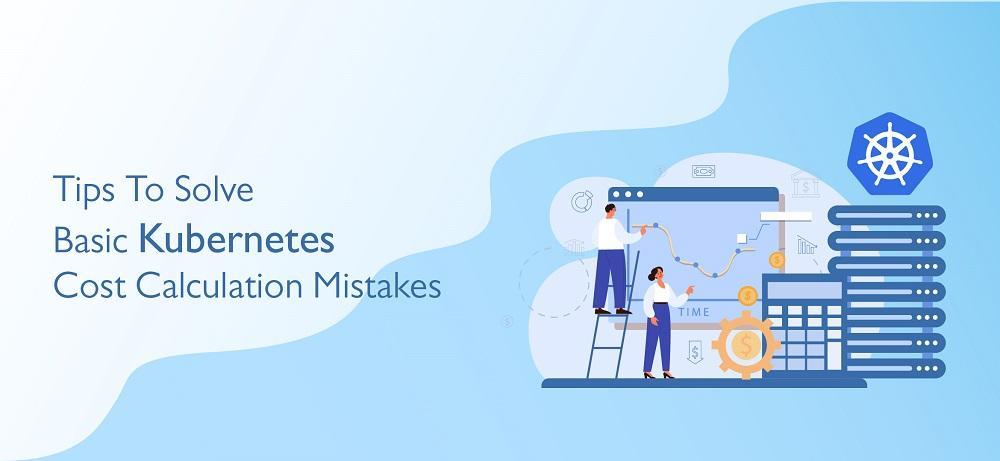Estimating cost estimation in Kubernetes was never easy because it gets complex over time. The more time businesses invest in changing tools and strategies, the more they face the cost issues. In recent Gartner’s forecast, they have listed that over 75% of global businesses will move to containerized platforms, like Docker, Kubernetes, and many others by 2022.
Well, the cost reduction strategies of Kubernetes can vary according to the cloud platform. For example, customers using Kubernetes on the AWS platform will receive the Kubernetes cost optimization best practices. However, it is not guaranteed that this bar will satisfy customers all time because, over the course of a period, these requirements start to increase, and so do the cost-saving cravings.
In order to maximize the bar of cloud cost saving, it is recommended to know and understand all possible Kubernetes challenges in this area of optimization.
This article contains information regarding five common Kubernetes cost optimization traps with their appropriate solutions.
The Reason Behind Confusing Kubernetes Cloud Costs:
Initially, when there was no such thing as containerization, developers used to tag the resources for specific projects or teams. And this way, financial operators can determine and manage the cost structure with ease.
However, this scenario contains some risk of overprovisioning cloud resources in applications to run without interruption. But the actual situation is different, where they may end up setting systems with bottlenecks by overprovisioning resources.
With the popularity of Kubernetes and other containerization tools, the traditional cost structure seems to be getting away from the support.
Now, let’s understand the cost control traps and learn to figure out the efficient way for Kubernetes cost allocation, estimation, and reporting.
Kubernetes Cost Utilization Traps:
- Calculating Cost per Container:
This container-oriented cost calculation isn’t complicated, but it demands significant time and infrastructure. Kubernetes is a shared platform and collection of various containers and applications. After a container is deployed, it will utilize its cluster’s resources and charge for each present storage instance.
For example, two teams are working on 10 different applications, and for such a scenario, it becomes hard to identify which cluster occupies which resource and which application is actually utilizing them. The reason is that most applications deployed in it are referenced to utilize multiple containers. Plus, getting the idea of particular cluster part utilization through a significant team is way more complex than it seems. And this confusion makes the cost calculation process more difficult.
- Paying Bills Through Multiple Accounts:
A company can have multiple cost accounts for different projects. For example, some applications have been created by the operations team and some by the company’s IT department in order to use certain resources for other projects, too. And that’s where company employees’ size and structure come to play. Companies containing multiple digital services with separate teams makes it difficult to track the cost spending on the cloud services. In the same way, various teams utilizing the same cluster become nearly unable to find the maximum utilization of services from a particular team.
- Tracking Cost Utilization Ratio Across the Multi-Cloud Platform:
In the case of multicloud, cost utilization tracking gets more complex. According to the Gartner study, currently, 81% of businesses are using multicloud services. And ICD study says that the multicloud userbase is forecasted to increase to 90% by 2022. Speaking of which, that day is not far when most businesses will be running their Kubernetes cluster on multicloud platforms with separate nodes.
- Calculating Cost for Scaled Platform:
Kubernetes platform is specifically designed to get scaling efficiencies, and many developers use it for its autoscaling mechanisms. And to reduce or eliminate clusters’ cost wasting, it is important to configure it even more precisely than usual.
Its vertical and horizontal pod autoscaler will definitely affect the cost calculation at some point. VPA constantly expands and shrinks resource allocation with the change in request numbers. On the other hand, HPA does the same with containers accordingly. This dynamicity of containers and their sizes makes the cost calculation and forecasting process more complex.
How Can We Solve These Cost Calculation Mistakes?
- Use a cost visibility tool like microservice level to track costs
- With a cost visibility tool, set a budget and monitor traffic to better understand user behavior
- Then they allocate the costs through the pod, deployment, namespace, and label type
- Analyze the cost utilization information for estimation
- Monitor the actual cost utilization against estimated or assumed ones
Automate The Kubernetes Cost Management Process:
In the usual case, resource allocation, cost calculation, and analysis, should not be challenging. However, it can be easy if we succeed in cost and resource allocation synchronization.
A Cost management automation tool must have the following features:
- Advanced cloud services utilization analysis and visibility for each microservices provide the common metrics for all cloud vendors.
- Instance selection and scaling automation.
- Ability to find instances that saves cost around 90%.
- Forecast cost spendings on projects, namespaces, clusters, and deployment platforms.
Conclusion:
Knowing the fact of the complexity of manual strategies for Kubernetes cloud cost management and still using it is way too risky and probably not the best choice. They consume lots of time, create severe errors, and mainly, they are hard to manage. However, fostering an automated cost management strategy is a smart choice that sets you free from lots of unnecessary brainstorming processes and helps to concentrate on designing products providing better customer experiences.
Want to utilize your Kubernetes cost structure in a better way? Contact us NOW!!



